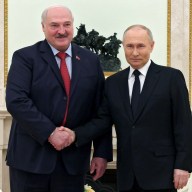This past weekend, the 50,000 or so competitors and spectators at the Waterfront Marathon in Toronto were able to get a bandage, oxygen or splint applied by a professional in mere minutes if they needed it.
That’s thanks to Greg Trent and his fellow bicycle paramedics.
These paramedics also work shifts on ambulances, but they sometimes move on two wheels to help deliver emergency services in hard-to-reach places. They show up in the city’s club district on the weekends and festivals throughout the warm months of the year (the last event they work is the Santa Claus Parade).
Trent, 48, grew up in Toronto and studied business at Sir Wilfrid Laurier University in Waterloo. Every summer, he came home and worked at Ontario Place. There, he admired the venue’s medical response team, who would take care of scrapes, bumps and breaks.
“I liked that idea of knowing what to do when something happened,” says Trent.
Trent got to know one of the guys on the team and asked him about the paramedic training course he’d just finished.
So, after graduation, Trent took the one-year course himself at Centennial College. (It’s two years now). He applied to Toronto’s Emergency Medical Services in 1983 and was accepted.
Wanting a little variety, he left a year later to work up in Kirkland Lake, Ont. He enjoyed the experience, but decided the fast pace of emergency services in the city suited him better, so came back to Toronto.
Toronto EMS founded the bicycle paramedic program in 1998 and Trent applied to join two years later. To qualify, he took the CAN-BIKE training program — which teaches bicycle safety and the rules of the road pertaining to bikes.
Now, as a part of a team of 30 paramedics, Trent works about 15 events a year — some on the team do as many as 30 — and works on an ambulances the rest of the time. Shifts usually last 12 hours, longer for certain all-day events.
Toronto EMS has 16 bikes and they’re all equipped with everything an ambulance has, including a small oxygen tank, a small defibrillator, airway kit, IV kit and splints.
When they’re not doing a call — most of them are for minor scrapes, but an ambulance always comes for more serious illnesses and accidents — Trent and his partner on the shift will bike around the event. They hand out band-aids and ice packs for minor scrapes, give directions and answer questions about their job.
“It’s very much a public relations thing as well.”
















